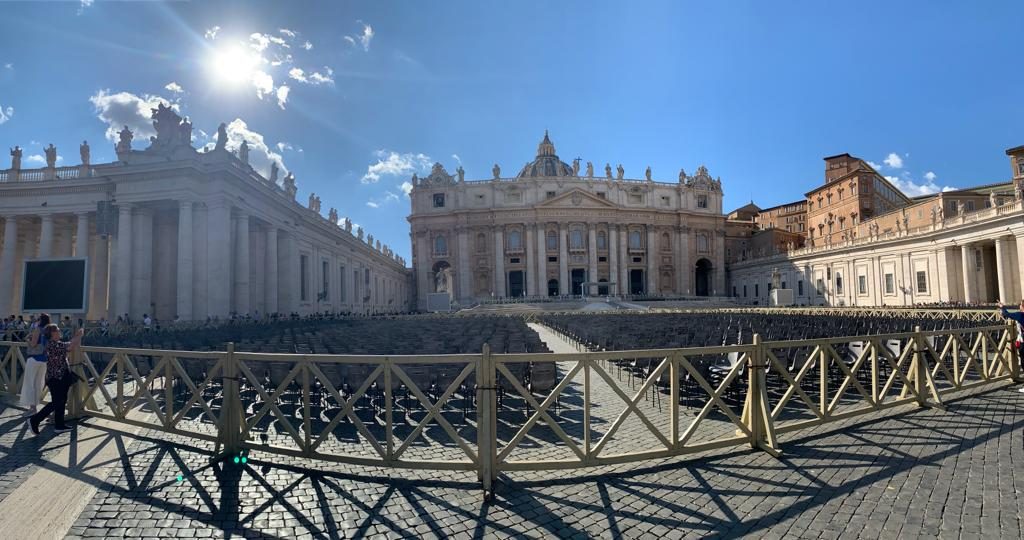St. Peter’s Square in the Vatican is undoubtedly the most monumental in the world. Bernini’s masterpiece is a worthy setting and a solemn entrance to the greatest temple of Christianity. Let’s find out more about the history, art, and myths associated with the piazza.

St. Peter’s Square: Bernini’s Architectural Masterpiece
The square takes the name of the Basilica dedicated to St. Peter, who died on Vatican hill following Nero’s persecutions. The square was built by Gian Lorenzo Bernini between the years 1660 and 1667.
The grandiose urban intervention also included the arrangement of the area in front of the Vatican area. Bernini designed an elliptical square, surrounded by a spectacular colonnade that symbolizes the great embrace with which the church welcomes all its faithful.
The colonnade joins the basilica thanks to two diverging side areas. The architect used this stratagem to overturn the perspective effect and make the facade of the basilica, designed by Maderno, seem much larger and closer to the square.
The huge portico is made up of imposing columns arranged in four rows, surmounted by a thick architrave and a marble cornice. The structure has a gabled roof crowned by a massive balustrade adorned with numerous statues of saints. It has 284 columns and 88 pillars.

An ancient obelisk and two symmetrical fountains are located along the transverse axis of the square. This geometric shape is typical of Baroque architecture, as having two centers, it imposes a continuous movement of the eye giving life to a dynamic space. The two magnificent fountains dating back to the seventeenth century, with their jets of water, give a musical background and break the solemnity of the environment in which we find ourselves.
Bernini had wisely calculated the surprise effect that was needed to welcome the spectator who suddenly found himself in front of the scenographic complex of the square, dominated by Michelangelo’s dome.
Although this effect was lost with the opening of Via della Conciliazione, crossing the square you can also see the plays of light and shadows generated by the alternation of empty and full spaces between the columns.
The multiple perspective views of the colonnade and the variety of architectural and sculptural elements are awe-inspiring.
If you position yourself in the two foci of the ellipse marked on the floor by a marble disc, the four rows of columns overlap perfectly, so that only the first row can be seen.

How to Get to St. Peter’s Square
The square and the Basilica are located in Vatican City, a few kilometers from the heart of Rome. The two cities are well connected by an excellent public transport system. The Vatican Museums and the Sistine Chapel are very close to the Piazza and will allow you to easily explore all the major points of interest in just one day.
By Metro, Bus, or Train
As already mentioned, the public transportation system to reach St. Peter’s Square is excellent. It comes down to preference.
Metro: Closest stop Ottaviano-S. Pietro (900m), red line from Roma Termini
Bus: Nearest stop Cavalleggeri / S. Pietro (350 m), bus number 40 or 64 from Roma Termini
Train: Nearest stop San Pietro (1 km), regional to Civitavecchia or to Pisa Centrale from Roma Termini.
Getting Here by Car
If you are planning to arrive by car, it is important to know that you cannot enter Vatican City by car unless you are visiting for official reasons. You will need to park your car in one of the nearby paid parking lots.
To get there from Rome, the fastest route is to drive through Corso Vittorio Emanuele II. For the intense city traffic, it is advisable to rely on efficient public transport.
Don’t miss the next article on St. Peter’s Basilica! We’ll go inside this sacred place and admire its beauty together.

